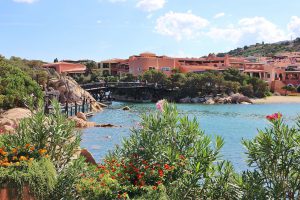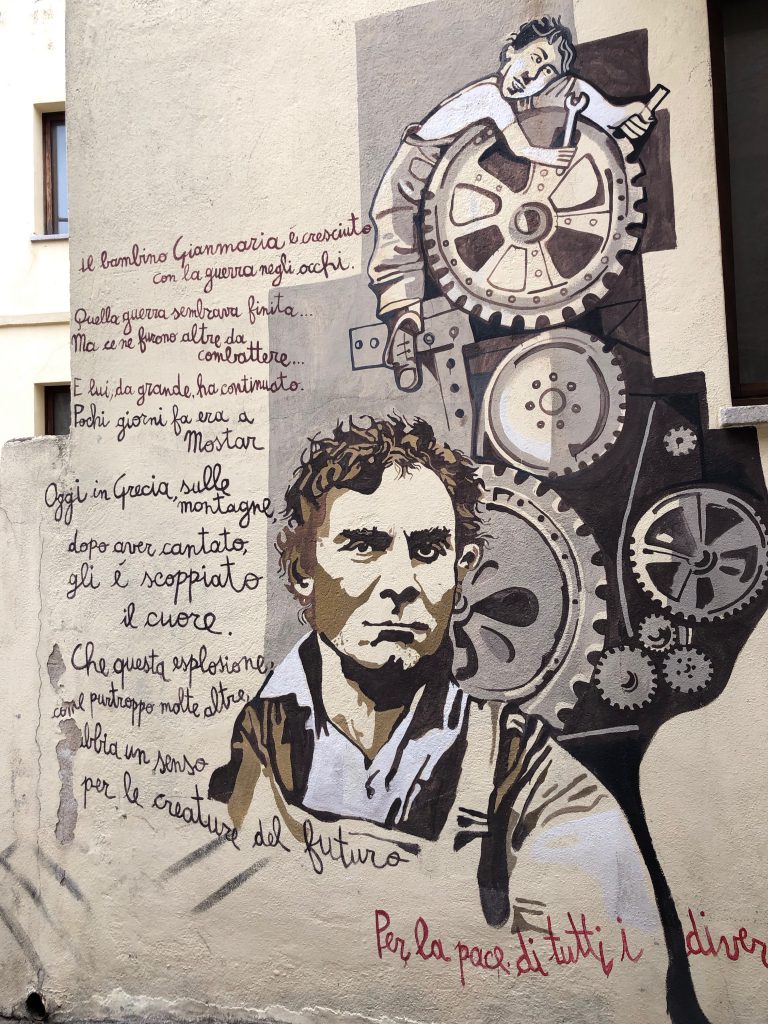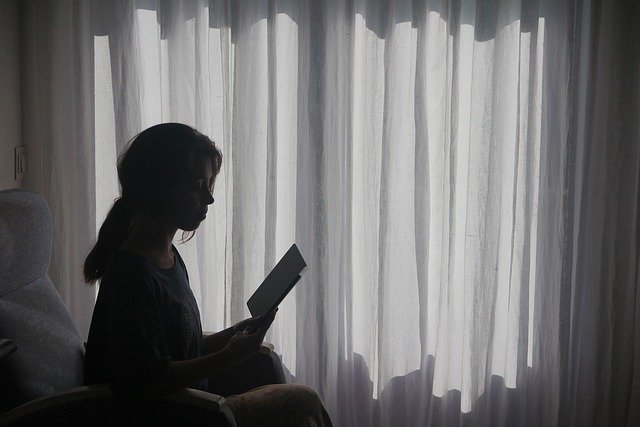Was ist eigentlich so toll an Sardinien? Antworten geben unsere fünf Sinne. Erfahren muss man die Insel natürlich selbst. Es folgen hier einige wenige theoretische Kostproben. Zur Erinnerung für alle, die schon mal da waren, und zur Vorbereitung für Interessierte:
Sehen, hören, riechen, schmecken und fühlen wir mal rein.
Sardinien sehen

In der globalen, geordneten Web-Welt kategorisiert man Farben nach Zahlen, zum Beispiel im CSS3-System. Was hat das mit Sardinien zu tun? Ganz einfach: Als die Designer Farbwerte wie #66CDAA in Worte fassten, müssen sie wohl auf Sardinien gewesen sein: „mittelaquamarinblau“, „hellmeergrün“, „mittelmeergrün“ (ja, tatsächlich), „mitteltürkis“, „dunkelhimmelblau“. So schillert das klare Wasser, das die Insel umschwappt, und prangt die Atmosphäre, die sie umrahmt.
Von größter Bedeutung allerdings ist das Smaragdgrün, eine Bezeichnung nach dem guten alten deutschen RAL-Katalog. Das klingt nach Luxus und ist, was Sardinien und seine berühmte Smaragdküste, die Costa Smeralda, ins Weltlicht gerückt hat.

Wir schreiben die Sechzigerjahre. Unberührte Traumbuchten, großartige Felsformationen, funkelndes Meer – wie ein Smaragd. Will haben, sagte sich der Multimilliardär Aga Khan und kaufte ein paar Dutzend Kilometer Küstenland im Nordosten der Insel. Für einen Apfel und ein Ei beziehungsweise 30 Cent pro Quadratmeter, aber mit architektonischem Feingefühl. Und so profitieren Insel und Besucher bis heute von der augenfreundlichen Bebauung im sogenannten neosardischen Stil, der die Architektur der touristisch aufstrebenden Insel von Anfang an prägte.

Es gibt also keine Bettenburgen auf Sardinien. Eine Art Urmutter der in die Landschaft eingepassten rötlichen Gemäuer ist das Luxushotel Cala di Volpe. Aber man muss weder dort wohnen, noch eine Jacht besitzen, um in den optischen Genuss von weißen Booten in edelsteinfarbenen Buchten zu kommen. Es gibt ein großes Angebot an günstigen Bed-and-Breakfast-Unterkünften, und die Strände sind für alle da. Im Promi-Städtchen Porto Cervo kann man treppauf treppab durch Arkaden in pittoresk versteckte Luxusboutiquen spähen und in der Kirche Stella Maris ganz umsonst verspielte sardische Architektur sowie einen echten El Greco (Mater dolorosa) bewundern.
Die Alternative: Grün statt Smaragd. Am anderen Ende Sardiniens, im Südwesten, befindet sich die Costa Verde: Auch hier trifft das Auge auf staunenswerte Meer-Felsen-Kontraste, aber auch gewaltige Dünen und grüne Natur. Hier wurden mal Bodenschätze geborgen. Heute findet man den Reiz von viel Ursprünglichkeit und wenig Touristen.

Apropos Ursprünglichkeit: Spektakuläres sehen – das geht auf Sardinien auch im Bergland im Inselinneren. Da gibt es die Ausblicke auf den Höhen des Gennargentu und Supramonte-Massivs, der „sardischen Dolomiten“, wo man unwillkürlich von der Schönheit unseres Planeten ergriffen wird.
Ins gebirgige Innere hatten sich die Sarden zurückgezogen, als über Jahrhunderte hinweg immer neue Eroberer-Begehrlichkeiten ihre Küsten heimsuchten. Die Gegenwehr gegen Unterwerfung und Fremdbestimmung, ganz aktuell gegen einen erfolgreich verhinderten NATO-Truppenübungsplatz – auch das kann man betrachten. Im Hirtendorf Orgosolo hat zwar keiner den Teufel an die Wand gemalt, aber viele Künstler Motive des politischen Widerstands. Über Jahre entstanden die äußerst sehenswerten „Murales“, Fassadengemälde, die ganze Straßenzüge zu einer außergewöhnlichen Ausstellung machen.


Sardinien hören
Da wir schon in den Bergen bei den Hirten mit ihren Schafherden sind – hier können wir Sardinien hören. Wenn möglich, sollte man einer Vorstellung des Canto a Tenore lauschen. Diese uralte ungewöhnliche Gesangsform hat sich in den Hirtendörfern entwickelt und gehört zum immateriellen Weltkulturerbe. Die Chorgruppe besteht aus vier Männern im traditionellen Hirtengewand. Der Solist trägt im melodiösen Sprechgesang seelenvolle Liedtexte vor. Die drei anderen Sänger in den Lagen Bass, „Contra“ und Alt ersetzen mit ihren Stimmuntermalungen – entstanden aus der Imitation von Tierlauten – gewissermaßen die Instrumente für ein harmonisches Zusammenspiel. Etwas gewöhnungsbedürftig, aber faszinierend.

Noch eine Empfehlung für die Ohren ist in den Bergen zu finden. Eine Rast oder gar ein Quartier in Hörweite des Glöckchengebimmels der Schaf- und Ziegenherden im Mix mit Vogelzwitschern und Insektengesurre ersetzt glatt mehrere Meditationskurse.
Sardinien schnuppern

Wo Sardinien ist, ist auch die Macchia. Die Macchia hat nichts mit dem Latte macchiato zu tun, sondern ist laut Wikipedia eine „sekundär entstandene, anthropogene, immergrüne Gebüschformation der mediterranen Hartlaubvegetationszone“. Einfach ausgedrückt bedeckt die Macchia den Boden mit einer Art struppigem Dschungel, durch den man nicht gehen kann, es sei denn, man ist eine Ziege, die sich durchfrisst. Von Reisejournalisten und Schriftstellern ist die Macchia tausendmal beschrieben und gepriesen. Doch nichts geht über die eigene Sinneserfahrung. Die Macchia tut es zuverlässig: einzigartig würzig duften. Aaaah.
Sardinien schmecken

Auf Sardinien gibt es viele Schafe. Wo viele Schafe sind, gibt es Schafskäse, und daher ist der Pecorino eine durch und durch sardische Käseart. Es gibt ihn dolce (weich, kurz gereift) und maturo (hart, lang gereift) sowie in vielen Varianten dazwischen, die man mithilfe eines guten Geschäfts oder Restaurants mal durchprobieren sollte. Achtung: Steht „Casu marzu“ auf der Karte, sollte man vor der Bestellung noch mal in sich gehen. Es handelt sich um wörtlich übersetzt „faulen Käse“ und zwar dergestalt, dass er von lebenden Maden durchsetzt ist. Ein Spezialität, die diesen Namen verdient.
Weniger herausfordernd sind die Culurgionis, eine Art sardische Ravioli, gerne als zweiter Gang zum Beispiel mit Kartoffel-Füllung und fruchtiger Tomatensauce.
Kein Essen ohne Pane carasau, ein sehr schnell sehr heiß gebackenes Brot in superdünnen Scheiben. Die Sarden machen auch eine eigene Speise daraus, indem sie die in Brühe eingeweichte Brotscheibe mit Tomatensauce, Pecorino und Spiegelei bedecken. Das Spiegelei direkt vor dem Verzehr mit der Gabel verschmieren und das Ganze aufrollen. Mehr „Cucina Tipico“ geht nicht.
Fleischliebhaber kommen bei dem Genuss von Porceddu auf ihre Kosten, dem Spanferkel, das meist zusammen mit einigen Artgenossen an einen prachtvollen Grill am offenen Feuer gehängt wird. Ein Anblick, auf den Köche stolz und Vegetarier nicht besonders erpicht sind.
Aus der Meeräsche entnehmen die Sarden den Rogen und servieren ihn als Bottarga bevorzugt mit Spaghetti.
Auch Wein können die Sarden: den roten Cannonau und den weißen Vermentino di Gallura.

Die lokale Süßigkeitenspezialität Torrone besteht aus Honig, Mandeln und Eiweiß und eignet sich auch als Mitbringsel unter drei Voraussetzungen:
- Man hat ab und zu einen irren Janker auf Süßes.
- Die nächste Gelegenheit zum Zähneputzen ist nicht weit.
- Man kann sich noch erinnern, warum man das im Urlaub so lecker fand.
Sardinien fühlen
Das Sardinien-Feeling lässt sich mit Worten nicht so leicht beschreiben. Zugegeben: Es gibt manchmal eine drückende Wetterküche, und der Scirocco kann mit Sand aus der Sahara nerven.
Aber das typische Sardinien-Gefühl geht – zum Beispiel in Cala Gonone an der Ostküste – so: Obwohl es September ist, streift um die Haut weiche, milde Luft und man steigt in 25 Grad warmes Meer. Unter den Fußsohlen kribbelt ein Meeresboden aus murmelartigen hübschen Steinchen, und in die Waden kneifen kleine gestreifte Möchte-gern-Piranhas, die freche Kinderstube einer Mittelmeerfischart, die im sanft plätschernden glasklaren Wasser gerne Touristen ärgert.
Wie erwähnt: Erfahren muss man es selbst.
English Version
Why Sardinia? Because you have five senses!
What’s so great about Sardinia? Answers come from our five senses. Of course you have to experience the island yourself. Here are a few theoretical tastings. As a reminder for all those who have been there before, and as preparation for those who are interested:
Let’s see, hear, smell, taste and feel it.
Sardinia for the eyes
In the global, ordered web world, colors are categorized by numbers, for example in the CSS3 system. What does this have to do with Sardinia? Quite simple: When the designers put color values like #66CDAA into words, they must have been on Sardinia: „middle aquamarine blue“, „light sea green“, „middle sea green“ (yes, actually), „middle turquoise“, „dark sky blue“. This is how the clear water that surrounds the island shimmers and the atmosphere that surrounds it shines.
Of greatest importance, however, is the emerald green, a designation after the good old German RAL catalogue. This sounds like luxury and is what has brought Sardinia and its famous emerald coast, the Costa Smeralda, into the world light.
It’s the sixties. Untouched dream bays, great rock formations, sparkling sea – like an emerald. The multi-billionaire Aga Khan decided to buy a few dozen kilometres of coastal land in the northeast of the island. For a song (respectively 30 cents per square meter), but with architectural sensitivity. And so the island and its visitors are still benefiting from the eye-friendly Neo-Sardinian-style buildings that shaped the architecture of this up-and-coming tourist island.
So there are no ugly concrete hotels in Sardinia. The luxury hotel Cala di Volpe is a kind of primordial mother of the reddish walls that fit into the landscape. But one neither has to live there nor to own a yacht in order to have the optical pleasure of white boats in gem-coloured bays. There is a wide range of cheap bed-and-breakfast accommodation and the beaches are accessible to everyone. In the celebrity town of Porto Cervo, you can peek upstairs through arcades into picturesquely hidden luxury boutiques and admire the playful Sardinian architecture and a genuine El Greco (Mater dolorosa) in the church of Stella Maris.
The alternative: green instead of emerald. At the other end of Sardinia, in the southwest, you will find the Costa Verde: Here, too, the eye meets astonishing sea-rock contrasts, but also enormous dunes and green nature. Here, mineral resources were once recovered. Today, one finds the charm of much originality and few tourists.
Apropos originality: Seeing spectacular views – this is also possible in Sardinia’s mountainous interior. There are views of the heights of the Gennargentu and Supramonte massifs, the „Sardinian Dolomites“, where you are captivated by the beauty of our planet.
The Sardinians had retreated into the mountainous interior, when over the centuries new conquerors‘ insinuations were ravaging their coasts. The resistance against subjugation and foreign rule, quite recently against a successfully prevented NATO military training area – this can also be seen. In the shepherd village of Orgosolo many artists have painted motifs of political resistance. Over the years, the extremely interesting „Murales“, façade paintings, were created that turn entire streets into an extraordinary exhibition.
Sardinia for the ears
Since we are already in the mountains with the shepherds with their flocks of sheep – here we can hear Sardinia. If possible, you should listen to a performance of Canto a Tenore. This ancient and unusual form of singing has developed in the shepherd’s villages and is part of the immaterial world cultural heritage. The choir group consists of four men in traditional shepherd’s clothes. The soloist recites soulful lyrics in melodious recitative. The three other singers in the registers bass, „contra“ and alto replace the instruments for a harmonic interplay with their vocal accompaniments – created from the imitation of animal sounds. Something to get used to, but fascinating.
There is another recommendation for the ears to be found in the mountains. A rest or even a lodging within earshot of the bell ringing of the sheep and goat herds in the mix with bird twittering and insect whimpering can easily substitute several meditation courses.
Sardinia for a sniff
Where Sardinia is, there is also the Macchia. The Macchia has nothing to do with the Latte macchiato, but is, according to Wikipedia, a „secondary, anthropogenic, evergreen bush formation of the Mediterranean hard leaf vegetation zone“. Simply put, the macchia covers the ground with a kind of shaggy jungle that you can’t walk through unless you’re a goat that eats its way through. Described and praised a thousand times by travel journalists and writers. The Macchia does it reliably: uniquely spicy smells. Aaaah.
Sardinia to taste
There are many sheep in Sardinia. Where there are many sheep, there is sheep cheese, and therefore the Pecorino is a thoroughly Sardinian type of cheese. There are dolce (soft, short matured) and maturo (hard, long matured) cheeses, as well as many varieties in between, which should be tried in a good shop or restaurant. Attention: If „Casu marzu“ is written on the menu, one should engage in serious soul-searching before ordering. Literally translated, it is „rotten cheese“ in such a way that it is interspersed with live maggots. A speciality that deserves this name.
Less challenging are the Culurgionis, a kind of Sardinian ravioli, often served as a second course, for example with potato filling and fruity tomato sauce.
No meal without Pane carasau, a fast very hot baked bread in super-thin slices. The Sardinians also make a special dish out of it by covering the bread slices soaked in broth with tomato sauce, pecorino and fried egg. Just before eating, smear the fried egg with the fork and roll it up. More „Cucina Tipico“ is not possible.
Meat lovers will be delighted by the pleasure of porceddu, the suckling pig, which is usually hung together with some of its kind on a magnificent barbecue on the open fire. A sight that cooks are proud of and vegetarians are not particularly keen on.
The Sardines take the roe from the mullet and serve it as bottarga, preferably with spaghetti.
The Sardinians also know wine: the red Cannonau and the white Vermentino di Gallura.
The local sweet speciality Torrone consists of honey, almonds and egg white and is also suitable as a souvenir under three conditions:
- You have a crazy craving for candy once in a while.
- The next opportunity to brush your teeth is not far away.
- You can still remember why it was so tasty on holiday.
Sardinia to feel
The Sardinia feeling is not so easy to describe with words. Admittedly: Sometimes there’s a heavy weather kitchen, and the Scirocco can bother you with sand from the Sahara.
But the typical Sardinian feeling – for example in Cala Gonone on the east coast – goes like this: although it is September, mild air and 25 degrees warm sea touch the skin. Under the soles of your feet a beach of marble-like pretty stones tingles, and small striped would-be piranhas, the cheeky nursery of a Mediterranean fish species that likes to annoy tourists in the gently splashing crystal-clear water, pinch your calves.
As already mentioned: You have to experience it yourself.




